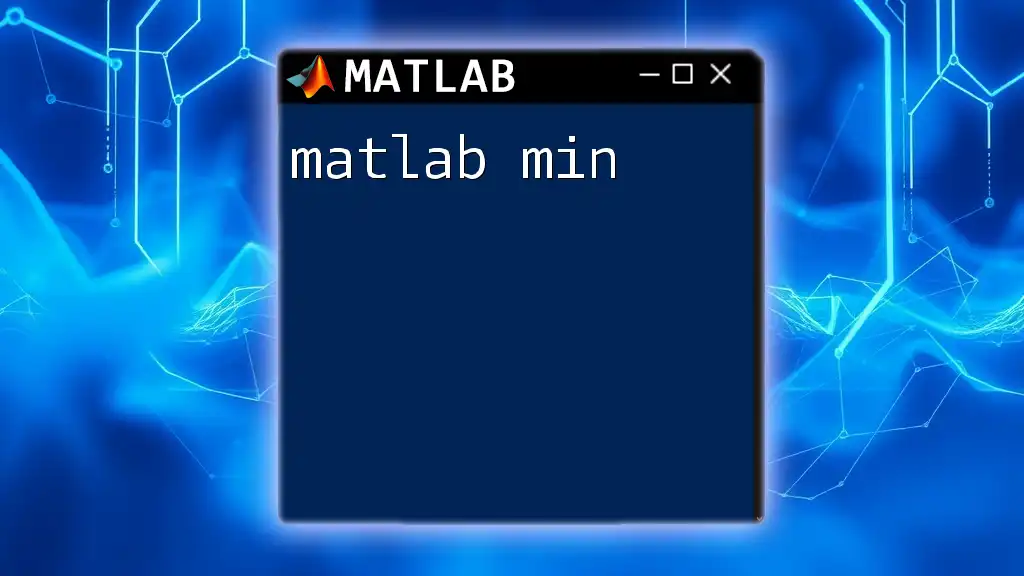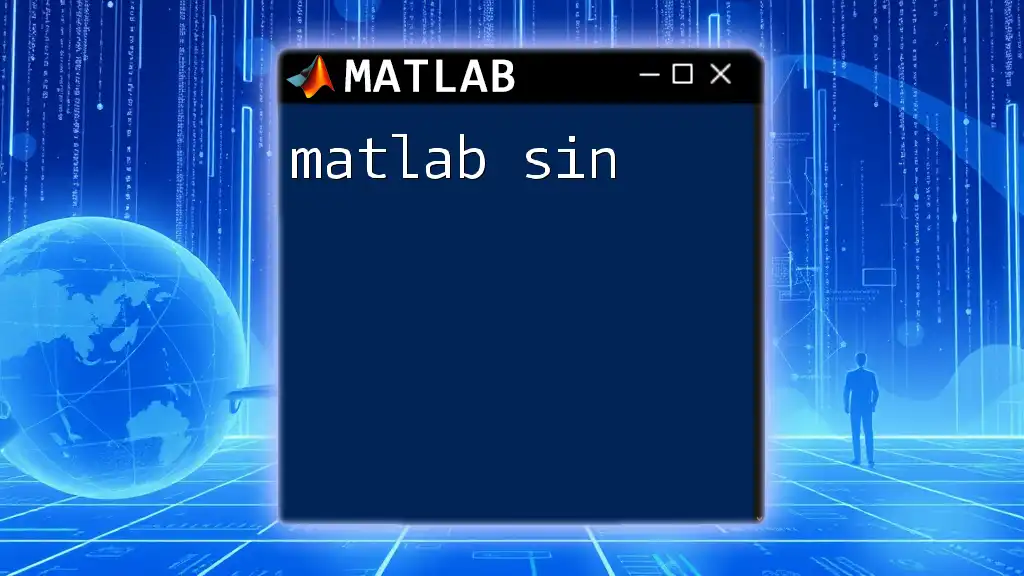Matlab masking allows you to selectively manipulate or analyze data by using a logical array to specify which elements of an array to operate on.
Here's a simple example of using a mask to zero out negative values in an array:
data = [-5, 3, 7, -2, 0]; % Original data
mask = data >= 0; % Create a mask for non-negative values
data(~mask) = 0; % Set negative values to zero
What is Masking in MATLAB?
Masking in MATLAB refers to the technique of filtering elements of an array or matrix based on specific criteria, allowing users to manipulate or analyze only the required portions of their data. It's a powerful tool frequently used in areas such as data analysis, image processing, and signal processing.
Types of Masking
Logical Masking
Logical masking involves creating a logical array where each element corresponds to whether a specific condition is met (TRUE) or not (FALSE). This approach is particularly useful for selecting and filtering data.
For instance, if you have a data array and you want to find all elements greater than a certain threshold, you can create a logical mask with the following code:
data = [1, 2, 3, 4, 5];
mask = data > 3; % Creates a logical mask
In this example, `mask` will be `[false, false, false, true, true]`, which indicates which elements of `data` are greater than 3.
Index-Based Masking
Index-based masking utilizes specific indices to access elements of an array directly. This method is often more intuitive when you know the exact positions of the elements you wish to include or exclude.
For example, if you want to access the first, third, and fifth elements of the array, you can define indices like this:
data = [10, 20, 30, 40, 50];
indices = [1, 3, 5];
selectedData = data(indices); % Selects elements at these indices
This code snippet will yield `selectedData` containing `[10, 30, 50]`.

Creating and Using Masks
Creating Logical Masks
To create a logical mask, you need a condition to evaluate your data. This can be done in a straightforward manner. For instance, if you want to identify all elements in an array that are negative, you can create a logical mask as follows:
data = [-5, 10, -3, 8, 0];
logicalMask = data < 0; % Create a logical mask for negative values
Here, `logicalMask` will yield `[true, false, true, false, false]`, adequately representing the negative numbers in the original array.
Applying Masks to Data
Once you have a logical mask, applying it to filter the data is easy. You can use the mask directly to access the elements of interest:
filteredData = data(logicalMask); % Uses the logical mask to filter data
In this case, `filteredData` will result in `[-5, -3]`, containing only the elements that meet the condition specified by the mask.

Applications of Masking
Data Analysis and Visualization
Masking is critical in data analysis, providing a strategy for cleaning datasets by excluding outliers or irrelevant data points. For instance, if you have a normally distributed dataset but wish to remove outliers, you can achieve this with masking:
data = randn(1, 100); % Generate random data
mask = abs(data) < 2; % Create a mask for keeping inliers
cleanData = data(mask); % Applying the mask to remove outliers
This example shows how you can effectively apply a condition to filter your data, keeping only those values that lie within the range defined by the mask.
Image Processing
In image processing, masking plays a crucial role, allowing the isolation or modification of specific regions within images. For instance, if you want to isolate brighter regions of an image, you can use a mask based on pixel intensity:
img = imread('image.jpg');
grayImg = rgb2gray(img);
mask = grayImg > 100; % Create a mask for bright areas
outputImg = img;
outputImg(repmat(~mask, [1, 1, 3])) = 0; % Apply the mask
In this example, the code converts an image to grayscale, creates a mask, then applies it to remove darker parts of the image, only displaying the brighter areas.

Best Practices for Masking
Choosing the Right Type of Mask
Choosing between logical and index-based masking depends on the context of your analysis. Logical masking is beneficial for conditional selections while index-based masking is straightforward when dealing with specific positions in your dataset. Consider the type of data you're working with to ensure you select the appropriate masking method.
Optimizing Mask Creation
Creating efficient masks is important for performance, especially with large datasets. Here are some tips:
- Use Vectorized Operations: MATLAB is optimized for vector operations. Instead of using loops to create masks, utilize vectorized expressions.
- Preallocate Memory: When working with larger arrays, preallocating memory for your output can minimize runtime.
For instance, instead of writing:
for i = 1:length(data)
if data(i) < 0
result(i) = data(i);
end
end
You could accomplish this with vectorization:
result = data(data < 0); % Efficiently filter negative values without a loop

Common Pitfalls and Troubleshooting
Debugging Masking Issues
While masking is powerful, it can also lead to common issues, such as dimension mismatches when applying a mask to data. Always ensure that your mask's dimensions match those of the data array it is being applied to.
For example, if you have a 2D matrix and mistakenly apply a 1D mask, MATLAB will throw an error. To troubleshoot:
- Verify the dimensions of both your data and mask arrays.
- Use `size(data)` and `size(mask)` to understand the shapes before applying masks.
Example Case Study
Imagine you attempted to filter data using a mask with a different size:
data = [1, 2, 3, 4];
mask = [true, false]; % Incorrect size
filteredData = data(mask); % This will throw an error
The output would be an error indicating a size mismatch. Always ensure masks align with your data in dimensions.

Conclusion
In summary, MATLAB masking is an essential technique for efficiently filtering and manipulating data. Whether you are working with arrays in analytical tasks or processing images, understanding how to effectively create and apply masks can significantly enhance your data handling skills. Experiment with different examples to further your understanding, and consider exploring advanced topics like multi-dimensional masking in future learning.

Additional Resources
To further develop your skills in MATLAB masking, consider checking the following resources:
- MATLAB Documentation References: Consult the official MATLAB documentation for detailed descriptions and additional examples on masking.
- Tutorial Videos: Look for video tutorials that provide visual guidance on applying masking techniques in various scenarios.
- Community Forums and Support: Engage with MATLAB community forums to discuss challenges or share your experiences in applying masking techniques.

















